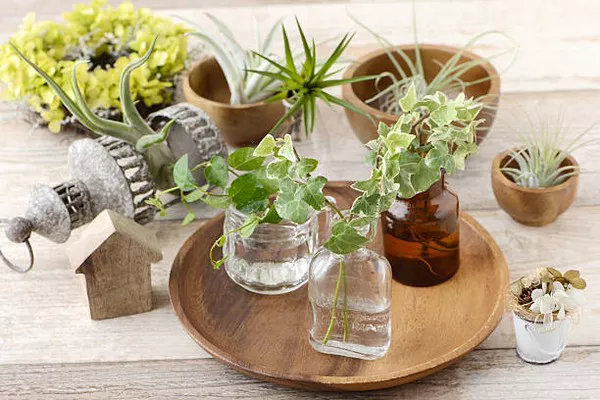Air plants, scientifically known as Tillandsia, have captivated plant enthusiasts and curious minds alike with their unique ability to thrive without the need for soil. These extraordinary plants, often found in tropical and subtropical regions, have gained popularity as versatile and low-maintenance houseplants. One of the intriguing aspects of air plants is their lifespan, which can vary depending on various factors. In this article, we delve into the fascinating world of air plants and explore how long they live, the factors influencing their lifespan, and ways to ensure their longevity.
Understanding the Basics of Air Plants
Air plants belong to the Bromeliaceae family and are renowned for their epiphytic nature. Unlike traditional plants that rely on soil for nutrients, air plants derive their sustenance from the surrounding air and moisture. Their leaves are covered with specialized trichomes, which enable them to absorb water and nutrients directly from the atmosphere. This unique adaptation allows air plants to thrive in a variety of environments, from the branches of trees to rocks and even on man-made surfaces.
See Also: Unveiling the Enigma: The Lifespan of Air Plants
Factors Influencing Air Plant Lifespan
The lifespan of air plants can vary widely depending on several key factors, including species, environment, care, and reproductive cycle.
Species: Different species of air plants have varying lifespans. Some may live for several years, while others can endure for several decades. Understanding the specific species you’re cultivating is crucial for estimating potential longevity.
Environment: The environment in which an air plant is grown plays a significant role in determining its lifespan. Natural conditions, such as temperature, humidity, and sunlight, directly impact the plant’s overall health and longevity.
Care: Proper care is essential for the longevity of air plants. Regular watering, appropriate light levels, and suitable nutrients are crucial components of their care routine. Neglecting these factors can significantly shorten their lifespan.
Reproductive Cycle: Air plants produce pups, which are smaller offshoots that grow around the base of the parent plant. These pups can eventually grow into mature plants. The reproductive cycle varies among species, but the ability to produce healthy pups contributes to the overall lifespan of air plants.
Average Lifespan of Air Plants
On average, most air plants live for several years. Many species have a lifespan of 3 to 7 years, with proper care and optimal conditions. However, some air plants have been known to surpass these averages and live for a decade or more. It’s important to note that individual lifespans can deviate significantly from these averages due to the factors mentioned earlier.
Extending the Lifespan of Air Plants
While air plants are renowned for their hardiness, providing them with the right care can significantly extend their lifespan.
Light: Air plants require bright, indirect light. Placing them near a window with filtered sunlight or providing them with artificial light that replicates natural conditions is essential for their growth and longevity.
Watering: The method and frequency of watering are critical to air plant health. Submerge the plants in water or mist them thoroughly to ensure proper hydration. Avoid allowing water to pool in the center of the plant, as this can lead to rot.
Air Circulation: Adequate air circulation prevents the buildup of excess moisture, which can be detrimental to air plants. Ensure that the plants have enough space and ventilation to prevent issues like rot and fungal growth.
Temperature and Humidity: Maintain a moderate temperature and humidity level. Avoid exposing air plants to extreme temperature fluctuations or excessively dry environments.
Fertilization: While air plants can derive nutrients from the air, occasional fertilization can support their growth and overall health. Use a diluted, balanced fertilizer to provide essential nutrients.
Pup Management: As air plants produce pups, it’s important to carefully separate and transplant them once they have grown to a reasonable size. This allows the parent plant to focus its energy on its own health and vitality.
Conclusion
The captivating world of air plants offers a glimpse into the resilience and adaptability of nature. These remarkable plants have evolved to thrive in diverse environments, using their unique features to absorb nutrients from the air and moisture. While their average lifespan falls within the range of several years, their longevity is greatly influenced by factors such as species, environment, care, and reproductive cycle.
As plant enthusiasts continue to explore the wonders of air plants, the quest for extending their lifespan remains a rewarding endeavor. By providing these plants with the right conditions – from appropriate light and watering to optimal temperature and humidity – we can ensure that air plants not only survive but thrive, gracing our surroundings with their beauty for years to come.


